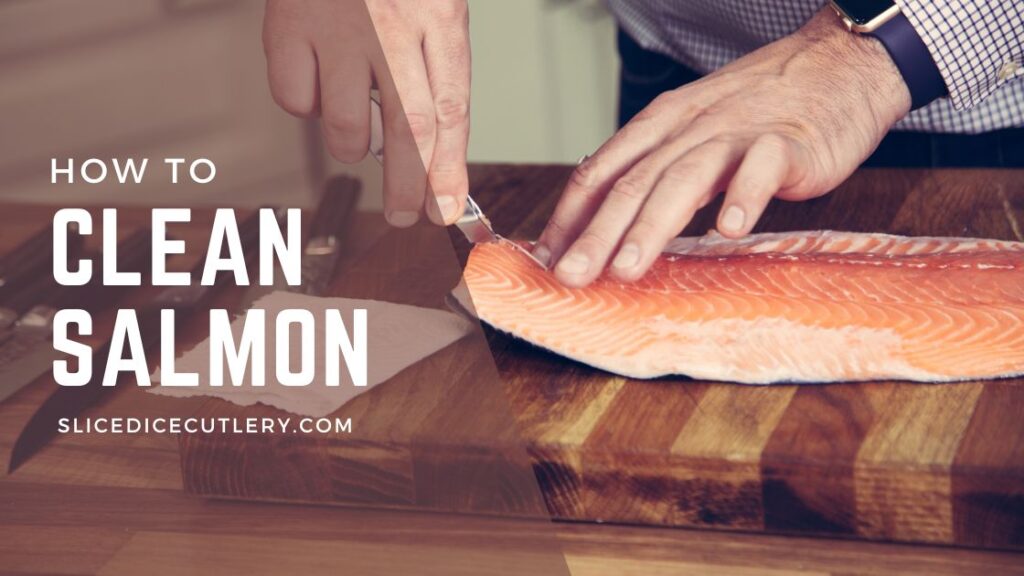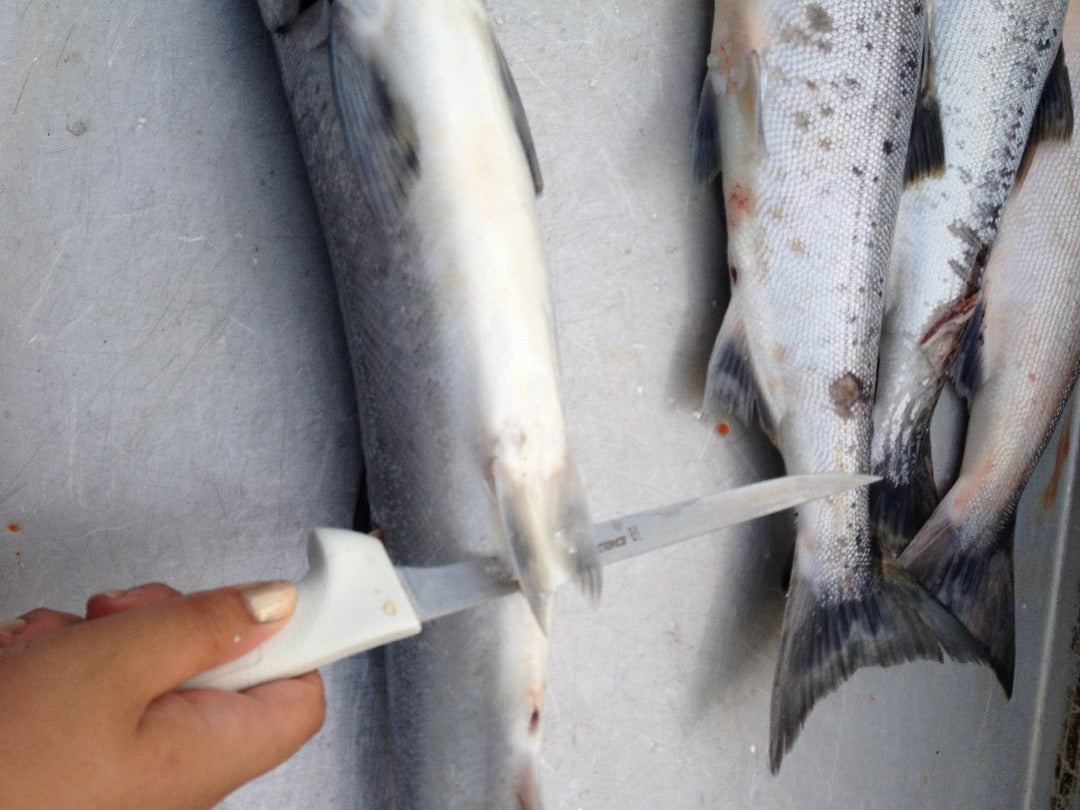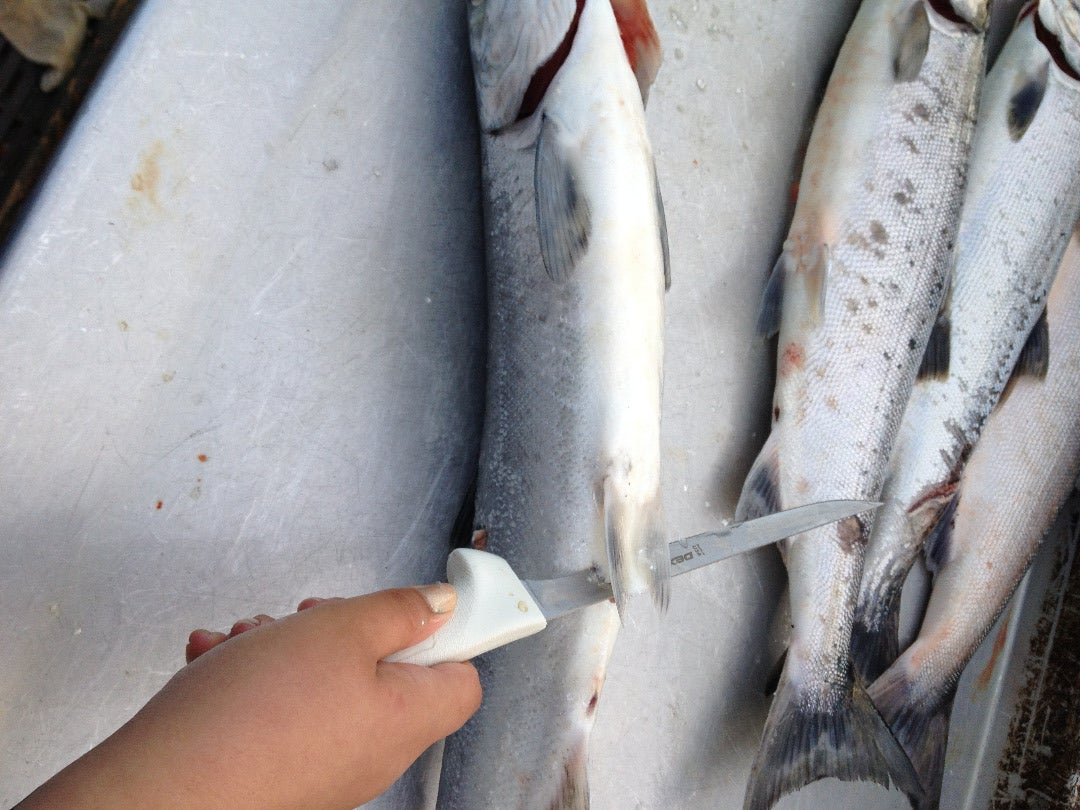Salmon is one of the most popular and nutrient-dense fish on the market. It’s important to know how to clean fresh salmon fillets though before you cook and eat them. Cleaning salmon yourself allows you to save money while ensuring quality. Follow this simple, foolproof guide to clean salmon fish from start to finish.
Why Clean Salmon Properly?
Cleaning salmon correctly
- Removes bacteria, parasites, and odors
- Maximizes flavor
- Yields clean, appealing fillets
- Allows thorough cooking for food safety
Skipping proper cleaning risks contamination and off-flavors. When you eat raw salmon in dishes like sashimi and sushi, you should only use clean, fresh salmon. Know where your fish came from and inspect closely.
What You Need To Clean Salmon
Gather these supplies before getting started:
- Cutting board
- Sharp fillet knife or salmon knife
- Trim knife or kitchen shears
- Paper towels
- Large bowl filled with cold water
- Spatula
- Storage containers
- Protective gloves (optional)
Having organized tools and prepped work area makes cleaning salmon easier,
Step-By-Step Guide to Cleaning Whole Salmon
Follow these steps to clean a whole, fresh salmon:
-
Rinse the salmon: Place salmon under cold running water to rinse away any blood, scales or debris on the skin and in the crevices.
-
Remove scales (optional): Use a spoon or dull knife to scrape off scales. Cut away fins with kitchen shears.
-
Gut the salmon (optional): Slice open belly from vent to gills. Scoop out internal organs and innards. Rinse out bloodline.
-
Remove gills (optional): Use tweezers or knife tip to cut out gills on each side.
-
Trim and cut (optional): Slice off head, tail and dorsal fin if still attached using a sturdy knife.
-
Debone (optional): Use tweezers to remove pinbones from flesh. Cut along backbone to remove large bones.
-
Fillet the salmon: With a sharp fillet knife, slice down back of salmon vertically behind gills. Carefully cut fillets off ribs.
-
Skin the fillets: Lay fillet skin-side down. Cut into flesh just above skin at tail end. Slice along skin to remove.
-
Portion the salmon: Cut fillets into serving sizes, usually 4-6 oz portions. Rinse again.
-
Store: Pat fillets dry with paper towels. Wrap tightly in plastic and store on ice or refrigerate. Use within 2 days.
This complete cleaning produces pristine, market-quality salmon fillets ready for cooking from a whole fish.
Step-By-Step Guide to Cleaning Salmon Fillets
For fresh, store-bought salmon fillets, simply:
-
Rinse fillets under cold water and pat dry with paper towels.
-
Inspect for bones. Use tweezers to remove any visible pinbones.
-
Portion into 4-6 oz serving sizes if large fillets.
-
Wrap tightly in plastic wrap. Store in refrigerator and use within 2 days.
Whole salmon provides the freshest, best-quality fillets when cleaned properly from start to finish. Fillets just need a quick rinse, inspection and proper storage until ready to cook.
Storing Cleaned Salmon Correctly
Proper storage prevents contamination and keeps salmon fresh after cleaning:
-
Refrigerate raw salmon fillets on ice or on a tray or paper towels to allow air flow. Store below 40°F.
-
Freeze for longer storage. Portion fillets, wrap tightly in plastic, and freeze at 0°F or below for 3-6 months.
-
Thaw frozen salmon in the refrigerator 1-2 days before use. Do not refreeze raw salmon.
-
Discard any raw salmon with off odors, dull or slimy texture, or gray, yellowish areas. Signs of bacteria or spoilage.
Following safe refrigeration guidelines ensures salmon stays fresh and safe to eat. Discard if any uncertainty.
Preparing Salmon for Cooking
Once cleaned and stored properly, salmon fillets require just a bit more prep before cooking:
-
Pat dry with paper towels right before cooking to prevent steaming instead of browning.
-
Season with desired herbs, salt, pepper, oils or marinades. Let marinate 15-30 minutes.
-
Watch for doneness when cooking. Salmon is best medium rare to medium doneness to prevent drying out.
-
Rest cooked salmon 5 minutes before serving. Carryover cooking will finish it to flaky perfection.
And that’s it! Properly cleaned salmon fillets make fast, foolproof meals.
Frequently Asked Questions About Cleaning Salmon
Still have some questions? Here are answers to common queries:
Does salmon need to be cleaned before cooking?
Yes, all raw salmon should be thoroughly cleaned before cooking to remove bacteria, parasites or contaminants on the skin, in crevices or internally.
Can I freeze cleaned salmon at home?
Absolutely. Portion, wrap tightly in plastic, and freeze cleaned raw salmon for 3-6 months at 0°F or below. Thaw in the fridge before use.
Is it safe to eat salmon raw or undercooked?
Only sushi-grade salmon just caught and cleaned can be eaten raw. All other salmon should reach 145°F internally before eating for food safety.
Can I cook salmon immediately after cleaning?
You can cook salmon right after cleaning but dry fillets thoroughly first. For best flavor and texture, refrigerate 6-24 hours after cleaning before cooking.
What’s the easiest way to remove pinbones from salmon?
Use sterilized tweezers or needle nose pliers. Grab the tip of each bone and pull gently to remove without tearing flesh. Work slowly.
How long does fresh, raw salmon last after cleaning?
If kept chilled between 34-40°F, freshly cleaned salmon will stay fresh for 1-2 days. Discard if any odors or very slimy texture develop.
Follow this simple guide for cleaning salmon like a pro. Then enjoy your beautiful fillets in all sorts of delicious recipes. Eating more salmon benefits both your health and budget.
Master Salmon Cleaning and Cooking
Now that you know how to clean salmon safely, it’s time to turn those pristine fillets into amazing meals.
Be sure to:
-
Dry salmon fillets well before cooking
-
Include some acid like lemon or vinegar
-
Avoid overcooking – salmon tastes best rare or medium rare
-
Let it rest before serving
Delicious options for cooked salmon include:
-
Grilled salmon – gets nice char on a hot grill
-
Baked salmon – gentle ambient heat, hard to overcook
-
Pan seared salmon – sauté skin side down to get crispy
-
Broiled salmon – quick cooking under high direct heat
-
Poached salmon – gently cooked in simmering liquid
-
Cedar plank salmon – unique smoky flavor
So grab some fresh salmon, clean it with this guide’s easy steps, and then cook up something delicious. Eating salmon provides great flavor and nutrition. Proper cleaning and cooking methods ensure you safely enjoy salmon’s amazing qualities.

Step 1: Remove the Anal Fins and Scale the Fish




The anal fins are a pair of fins located near the rear of the fish. To get rid of these fins, put your knife behind the anal fins, cut down a little, and then run the knife across the fins. Once these fins are removed, dispose of them properly.
Once the fins are removed, scale the fish. This fish did not have this done, and it was much harder to scale.
If you don’t have more than one dull fillet knife, you can use a sharp one instead. To scale the fish, start at the tail and run the knife down the skin toward the head. Do this repeatedly, and with a fast repeated motion, to completely scale the fish. Make sure that you scale both sides of the fish.
DISCLAIMER:
You do not have to scale the fish, but salmon scales come off easily. It makes it difficult to clean the fillets and cook them if the scales are still on them.
Introduction: How to Fillet a Fresh Caught Salmon


This is an Instructable on how to fillet a salmon that is fresh caught out of the river. Keep in mind that these salmon were caught less than two hours before we cleaned them. Also we leave the skin so it can be grilled, but they are scaled. This instructable will also show you how to get the fish’s roe (eggs) and milt (sperm sacs).
If you want to know if the fish you have is male or female before you cut it open, look at its head. Males have a more pointed jaw and females are more rounded. The top fish in the first photo is a male and the other three are female. There are times when it’s hard to tell because fish are different sizes and stages of change. A smaller male fish might look like a female if its jaw has not yet extended.
Materials:
a fillet knife (two are better; one is used to skin the fish and the other to cut it up). ).
(This method could be used to fillet other fish, but we haven’t caught any to test it on.) a fresh salmon ).
a place to clean your fish (this could be there where you fish, or you might have to go home and do it) Make sure your space is large enough for the fish. ).
A fish cleaning mat (you don’t have to use this, but it helps keep the fish from moving around while you clean it) ).
